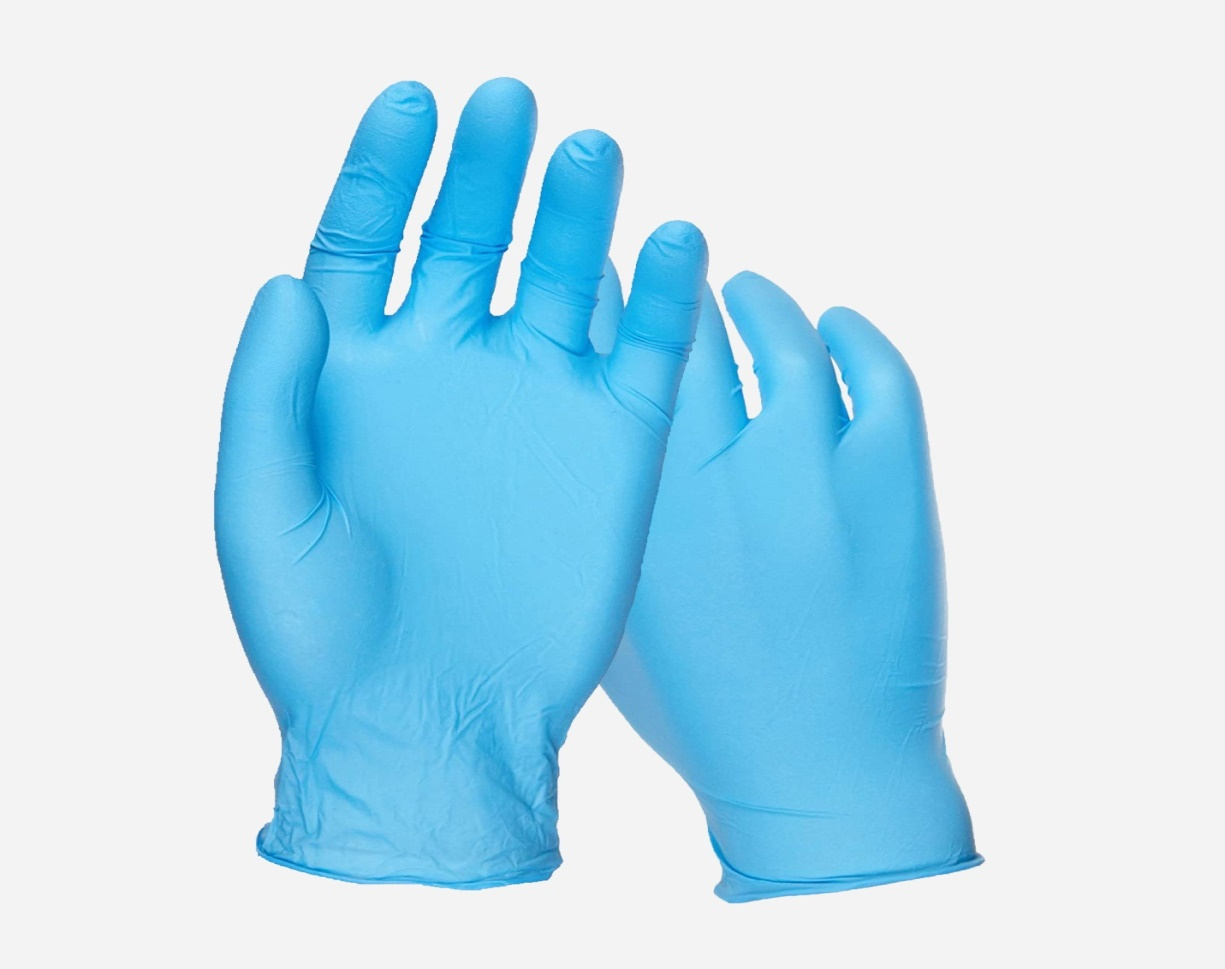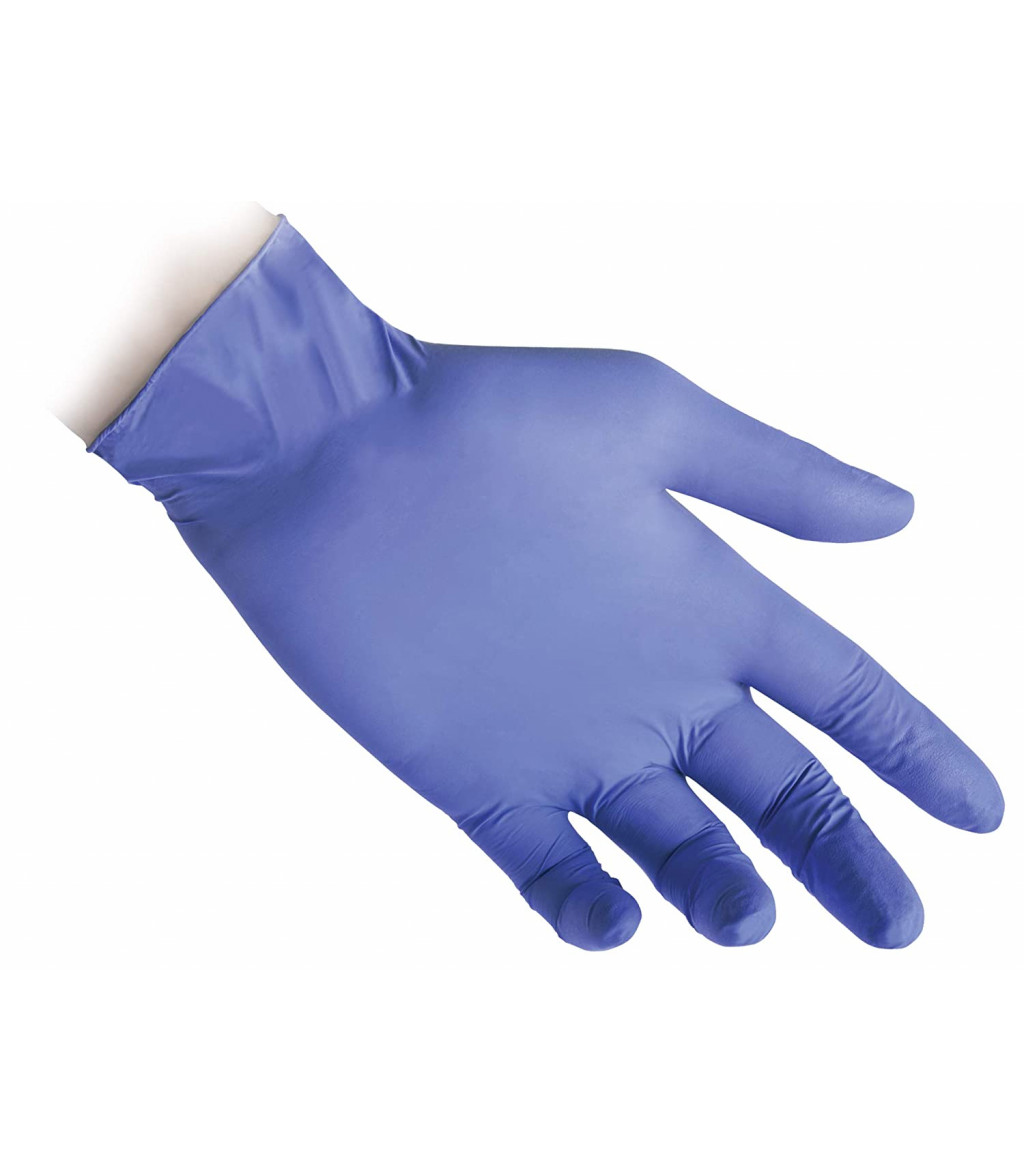2021/08/23 / By hqt / Tags:
Comparison between Latex Gloves and Nitrile Glove: Pros & Cons
Comparison between latex gloves and nitrile glove
Medical glove is an indispensable product in the medical industry with the effect of infection control, prevention of cross-infection, and health safety for patients and medical staff. Currently on the market there are many types of medical gloves products, in which, classified by origin, there are two main types: Latex gloves and Nitrile glove.

Article content
1 Latex Gloves
2 Nitrile Gloves
3 Powdered gloves
4 Powder-free gloves
5 Limitations of powdered latex gloves
6 What kind of medical gloves should be common today?
Latex Gloves
These gloves made from natural rubber materials formed during processing along with temperature and some chemicals. It forms an extremely good protective layer and is very supple, fitting well when we wear gloves. Identification: Latex gloves are opaque yellow.
However, the first nitrile glove was quite difficult to put on because of the friction between the rubber and the skin of the hands. For healthcare workers who come into contact with large numbers of patients, frequent glove changes are a must.
Why powder is common?
Understanding this need, medical glove manufacturers have devised a simple method: using powder to reduce the friction between the skin of the hand and the rubber to make it easier to put on and take off. From there, cornstarch is common to coat the inside of the glove so that it can be easily put on and taken off.
On the other hand, after a period of wearing gloves, the hands will sweat, causing moisture and then, the powder in the gloves helps absorb sweat, creating a comfortable feeling for the wearer. This is even more useful for people who have a lot of sweaty hands.
Nitrile Gloves
Nitrile gloves are synthetic rubber, manufactured similar to Latex gloves but do not contain any latex proteins, so they do not cause allergies in some sensitive people. Gloves have good water resistance and oil resistance, so these gloves are widely common in all industries that require high hygiene such as testing, dentistry and health care as well as non-medical industries such as industry, food processing.
Powdered gloves
Gloves “Powdered” means that cornstarch is coated in the glove to make it easier to put on and take off the gloves. Often common in the medical industry because nitrile glove is cheaper and especially with the requirement of “one patient-one pair of gloves” to avoid spreading the disease, it is faster and easier to use powdered gloves.
Powder-free gloves
“Powder Free” gloves mean gloves manufactured by a technological process that have a Polymer or Chlorine coating on the entire surface to prevent adhesion when wearing gloves. Commonly common in biotechnology and pharmaceutical industry, drive industry, semiconductor and microelectronics, especially in surgery to ensure absolute safety for patients with powder allergies can also be treated. Heal wounds quickly.
Limitations of powdered latex gloves
That is, there is a small portion of the population that is allergic to the protein in natural rubber (latex). The protein left in the nitrile glove after the manufacturing process will bind to the powder. Long-term storage, when taken out to use, this powder comes into contact with the skin of the hands and causes an allergic reaction to the user.
A common symptom of allergy sufferers is itching when wearing gloves. Even severe allergic cases will cause swelling, unwanted redness of the skin.
Why powdered free gloves are good during surgery?
On the other hand, in surgery, the use of powder-free medical gloves is almost a must. Because when using powdered gloves or nitrile glove, there is an increased risk of powder falling on the surgical area, making the wound slow to heal or possibly becoming infected. Therefore, although powder-free gloves do not offer the same quick on and off action as powdered gloves, they offer a higher level of safety.
What type of medical gloves should be common today?
Each type of latex or nitrile glove product has its own advantages and disadvantages. Particularly for Latex gloves, it will bring a natural and easy grip feeling.
Nitrile gloves are durable, strong and highly puncture resistant. The affordable powdered gloves are the right choice for daily care visits and the powder-free gloves are safer for minor surgeries and open wounds or users with sensitive skin. .

| Advantages | Disadvantages | |
| Latex gloves | Extremely good elasticity, maximum stretch and high puncture resistance. - Excellent adhesion ability, creating a natural grip feeling like a second skin. - Biodegradable so it is environmentally friendly. - Affordability. – Diversity of products: powdered, powder-free, surgical gloves. |
- May cause allergies. - For the product line with powder, it can also cause dry skin after a long time of use. |
| Nitrile gloves | – Suitable for sensitive terrain when users are allergic to latex protein in natural rubber gloves. Very high wear resistance, chemical resistance and puncture resistance. |
However, the product has less elasticity than Latex gloves. - Higher cost. - Non-biodegradable. |
Properly clean nitrile glove for reuse
Most of us will not want to clean a pair of woolen gloves that cost only a few thousand dongs but will throw them away after they get dirty. However, for hundreds of thousands of Kevlar ® nitrile glove, cleaning and reusing gloves will save a lot of money.
Each type of glove is made from different materials, so we need separate cleaning methods for each type. This article will show you how to clean common protective gloves.
Nylon fiber gloves
- Use warm water about 40 degrees C + washing powder.
- Moreover, can be dried in a tumble dryer at below medium heat. Do not use high temperature.
- Anti-static nylon fiber gloves
- Similarly, cotton/polyester fiber gloves
- Use warm water about 40 degrees C + washing powder.
- Furthermore, can be dried with a tumble dryer on medium heat.
Cotton/polyester fiber gloves
Gloves with coating
The coating on the nitrile glove is quite leathery. Therefore, we need to choose the right cleaning solution to maintain the properties of the coating.
- Use warm water of about 30 degrees Celsius or lower + powder or laundry detergent specially designed for children's sensitive skin.
- Moreover, can be dried in a tumble dryer at below medium heat. Do not use high temperature.
- Do not use bleach


